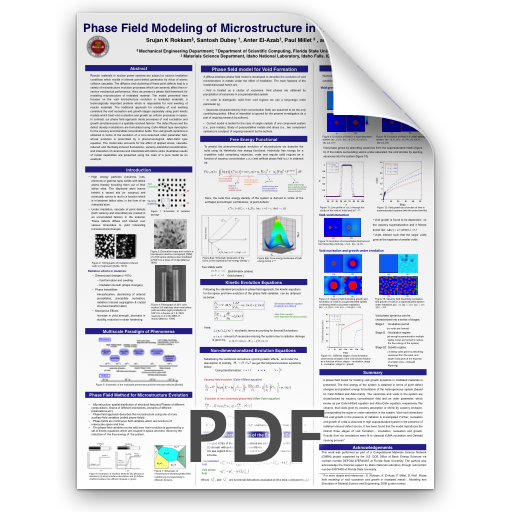
Phase Field Modeling of Microstructure in Irradiated Materials
Abstract
Reactor materials in nuclear power systems are subject to neutron irradiation conditions which results in intense point defect generation by virtue of atomic collision cascades. The diffusion and clustering of these point defects lead to a variety of microstructure evolution processes which can severely affect their in- service mechanical performance. Here we present a phase field framework for modeling microstructure of irradiated material. The model presented here focuses on the void microstructure evolution in irradiated materials, a technologically important problem which is responsible for void swelling of reactor materials. The traditional approach for modeling of void swelling considers the void nucleation and growth stages separately using point kinetic models which treat void nucleation and growth as uniform processes in space. In contrast, our phase field approach treats processes of void nucleation and growth simultaneously in a spatially resolved fashion. The defect fluxes and the defect density modulations are formulated using Cahn-Hilliard type description for the vacancy and interstitial concentration fields. The void growth dynamics is obtained in terms of the evolution of a non-conserved order parameter field, whose evolution is prescribed by a phenomenological Allen-Cahn type equation. The model also accounts for the effect of applied stress, cascade- induced and thermally-induced fluctuations, vacancy-interstitial recombination, and interaction of vacancies and interstitials with lattice sinks. Illustrative results of model capabilities are presented using the case of a pure metal as an example.

